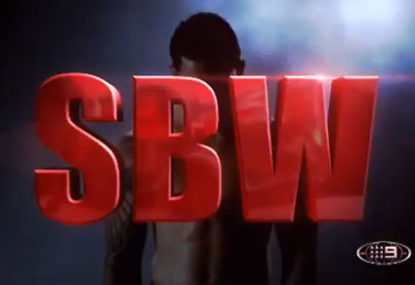Rugby league is not a better product than rugby union; it simply has a better marketing department.
Let’s take a look at how differently the two codes approach things.
League pursues three of the four marketing P’s: promotion, price and place.
The product? Not so much.
League split from union around the same time Edison split from anonymity and invented the light bulb.
Over this period of time the game hasn’t really changed, notwithstanding the occasional gangbuster initiative such as the 40/20, a bolt-on which has a bit of the ‘backyard rules’ to it and about as much positive impact as ice build-up in a freezer.
Another key milestone of product development in league has been the introduction of 45 referees in each game; none of whom are allowed to actually award a try – they must refer it instead to another bloke who, for some reason, needs to watch it on replay before it’s given.
And that’s about the sum culmination of league’s efforts on developing their product.
Rugby union?
The Australian rugby public, frankly, has year after year been bullying the code into tweaking rules and interpretations of laws.
The code has become so fixated on the product the other three P’s are being ignored and it’s killing the popularity of the sport in this market.
We can look at how the codes play the other three P’s in the marketing mix, promotion, price and place.
Promotion
At league, the reintroduction of Sonny Bill Williams was met with fanfare.
In his return game, shrewdly timed as the season opener, confetti sprayed our televisions. The man who made it good with the All Blacks came home to where he belonged.
The free-to-air channel and their commentary banged on about the majesty of the occasion; the slightest hint of gush.
The camera work, bright colours, carnival atmosphere; it was all geared to convince the viewer the return of SBW was an amazing thing.
And we believed them.
In a pre-recorded interview between Brad Fittler and SBW, expertly telecast at halftime, Fittler tried his hardest to mock Williams’ lack of legacy.
It was a veiled attempt at embarrassing Williams into agreeing to stay with the code and the Roosters past 2013.
The interview piqued our interest, laced with bitterness and an undercurrent of ‘pretty-please’.
The gruesome manner in which SBW turned down Fittler’s advances did not detract from the power in the message; that league is interesting and exciting.
If SBW turns us down he is a villain as we always knew he was. If he agrees to stay then we are all amazing.
The halftime break drew to a close, and a few more meat pie ads were slipped in.
A well-known beer’s theme songs played in the background, broadcast into our living rooms like the fans’ national anthem.
All in all we had ourselves a right little propaganda fix.
Fast forward a few years of subconscious spray and eventually you develop a partnership between the code and the brands and the fans.
It’s magic.
In contrast, we can look at Israel Folau’s move to union, which was carried through almost hush-hush.
There was no fanfare, no pre-recorded interviews played at halftime to keep us glued to our screens.
Whereas Fittler gave SBW the heavies like a father might to his daughter’s new boyfriend, Folau was afforded a respectful and muted introduction.
It’s as though no one wants to look foolish if it doesn’t work out, and it’s stifling creativity at every level.
Price
Pricing in league is smart, flexible and within the budget of the punters.
At the Roosters you have 48 ticket options, and they charge more for a ticket when the Roosters play teams higher up the ladder.
Why not?
Last year, Roarer Elisha Pearce wrote a fine article ‘Are the Wallabies pricing out potential fans‘.
He noted a rubbish ticket to the Wallabies will cost you $159, while in New Zealand the Super Rugby final tickets last year were going for as little as $35.
You can pick up a premium seat at the Roosters versus Tigers for $42. You can’t pick up a premium seat at the Waratahs because the absent corporates have a monopoly on that real estate.
ANZ Stadium in Sydney; 35,000 empty seats and the dedicated fans who still turn up can’t choose where to sit.
Place
League delivers their product to the people.
With stadia in suburban areas, daily news coverage across the first 18 sports pages of the tabloids, and live telecast on free-to-air television; you actually can’t get away from it.
With rugby, you can’t enjoy a South African Super Rugby game without some interruption of signal. The only question is how much of the game will be very apologetically lost in transmission.
While the South African commentators and cheerleaders are excellent, their camerawork is not.
This would not be tolerated in league, a code run by intelligent people who recognise the telecast is a fairly important function in the distribution of their product.
With all the carry on and dissatisfaction with union in Australia, you may think the fans here don’t actually like their code.
Although they grieve for it, so they must love it.
Perhaps the ARU could remember this, and focus their energies on the other core functions of good marketing if they want to win the battle of the codes.





























































































